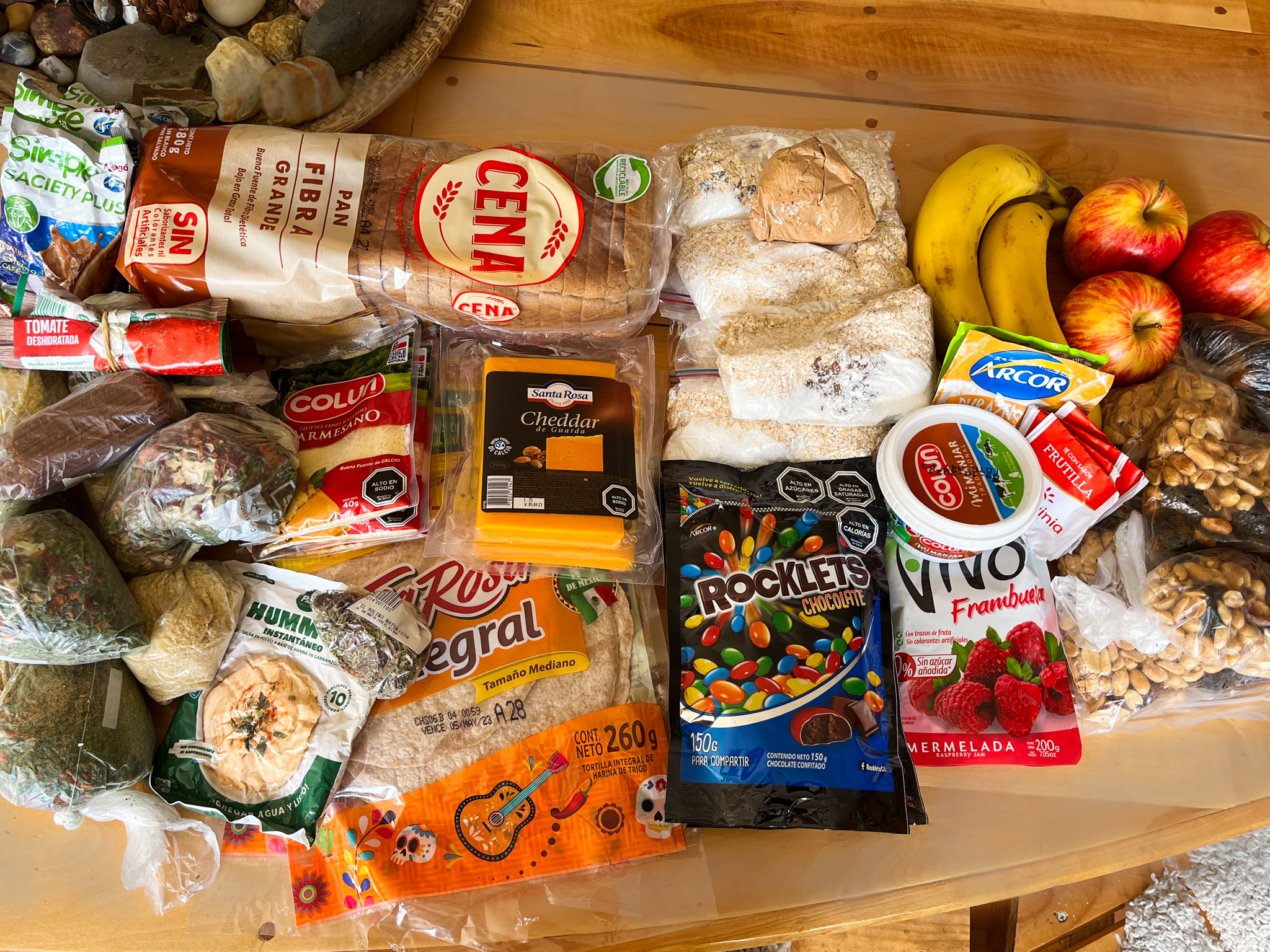

What do you eat when you’re backpacking?
This is one of the most common questions I get when I tell people about my backcountry adventures. I’m not sure why most people assume backpacking food is unvaried and bland. No, you don’t have to eat oatmeal for every meal (unless you want to).
There’s actually a variety of foods you can pack, and the best backpacking meals will be healthy and protein-rich. Backpacking food doesn’t need to be prohibitively expensive nor elaborate to prepare, though. Some of the best backpacking meals can be easily found in the grocery store, if you know where to look!
In this post I’ll share 57 of my best backpacking meal ideas (including vegetarian options). My list focuses on items that are affordable, easily sourced, and quick to prepare. I’ll also show you what to look for when selecting backpacking food, and how to plan and pack your meals.
Check out my guide to backpacking for more tips on how to prepare for your backpacking trip.
Cooking Equipment for Backpacking Meals


Before planning your backpacking meals, first make sure you have backpacking cooking equipment. Take a look at my backpacking checklist for more information on what to bring and why.
- Stove or Jetboil
- Fuel Canister
- Lighter
- Pot and Lid
- Spork
- Cup (optional)
- Plates or Bowls (optional)
- Biodegradable Soap (optional)
Plan the Best Backpacking Meals: 7 Things to Look For
- Calorie-dense. You’ll be burning a lot of Calories. The average backpacker burns thousands in a day! Due to limited space in your backpack, make sure to pack compact and lightweight backpacking foods. Foods with lower water content (i.e. dehydrated) are a good place to start.
- Fast-cooking. You’ll have limited cooking fuel, so choose items that cook in 10 minutes or less to conserve gas.
- Easy to prepare. After a long day on the trail, you might not have the energy to prepare an elaborate meal. Select simple meals, especially if you find yourself cooking in low light conditions during the evening.
- Non-perishable. Consider the duration of your hike and the expected temperatures. Fragile items like fresh bananas are challenging to pack. In hot climates, foods like cheese may spoil and chocolate will melt. Unless you like eating crumbs, also avoid foods that crush easily like delicate cookies.
- Healthy. Backpacking can be physically demanding, so prioritize nutritious foods that are good for your body. This includes packing protein-rich backpacking foods.
- Variety. Many hiking snacks (such as dried fruit and energy bars) are full of sugar, so pack some salty and savory items for variety.
- Delicious. Bring backpacking foods that you like. If you pack meals that are extremely compact and nutritious but you don’t enjoy eating, you will be miserable.


Backpacking Meals: How Much Food to Bring
The amount of food you should bring depends on how strenuous your route is, but between 2,500 and 4,500 Calories per day is a good range. Think about how much you typically consume on a day hike for a good starting point estimate.
For reference, here’s what a day’s worth of backpacking meals looks like for me (slim 5’6” woman), totaling ~2,500 Calories:
- Breakfast: Oatmeal + raisins (300 kcal)
- Snacks: Dried fruit, nuts, Cheez-Its, chocolate, protein bar (1300 kcal)
- Lunch: Tortillas, cheese, dried chickpeas (500 kcal)
- Dinner: Pasta with dried beans and veggies (400 kcal)
Bring an extra day’s worth of food for unexpected delays or if you decide to extend your time on the trail.
How to Pack your Backpacking Meals
Whenever possible, replace the bulky original packaging of backpacking food items. I like packing meals and snacks into individual bags for several reasons:
- Portion control on long trips.
- You can keep your food for the day in an accessible pocket while the rest of it is buried deep in your backpack.
- Easier cooking, especially in windy conditions. Using pre-portioned bags avoids the hassle of measuring from a large bag and minimizes the risk of food spilling or blowing away in the wind.
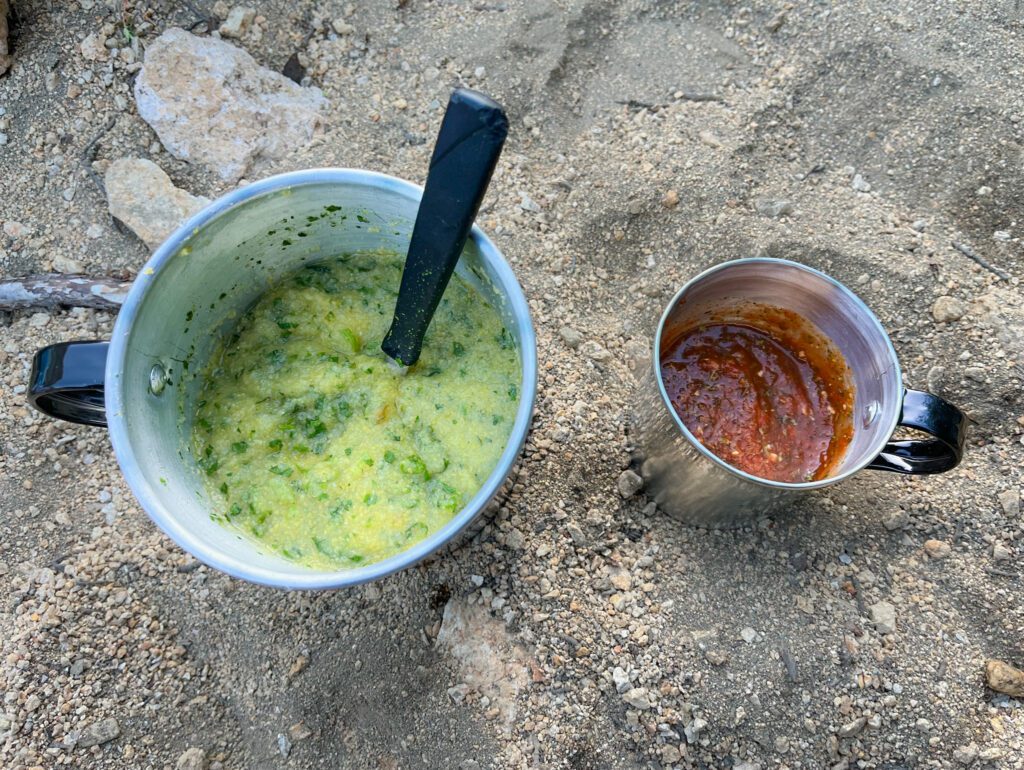

A great backpacking meal tip is to use freezer ziploc bags. These bags are safe to use with boiling water! Use them to pack foods like oatmeal. Simply pour water into the bag and eat directly from it to avoid having to clean a pot or bowl.
If you are using a bear canister, ensure all of your food (beyond what you’ll consume on the first day) plus your scented toiletries fit inside. Also beware of mice, which in certain areas are notorious for chewing holes through tents and backpacks to get to food. Bring a bag to hang your food when necessary.
Best Backpacking Meals for Shorter Trips
If you’re going on a shorter trip, then lucky you! You’ll have even more food options since you’ll have more room in your pack.
For backpacking trips that are only a few days long, fresh foods such as veggies (bell peppers, zucchini, broccoli, potatoes, carrots, cucumbers, onions) and fruits (oranges, apples) hold up nicely. Pack them whole, chop them up at camp, and pack out the scraps and peels. Just make sure they fit in your bear canister, if required. I think the extra weight of fresh foods is completely worth it. I don’t always feel at my best after eating dehydrated foods for several days in a row.
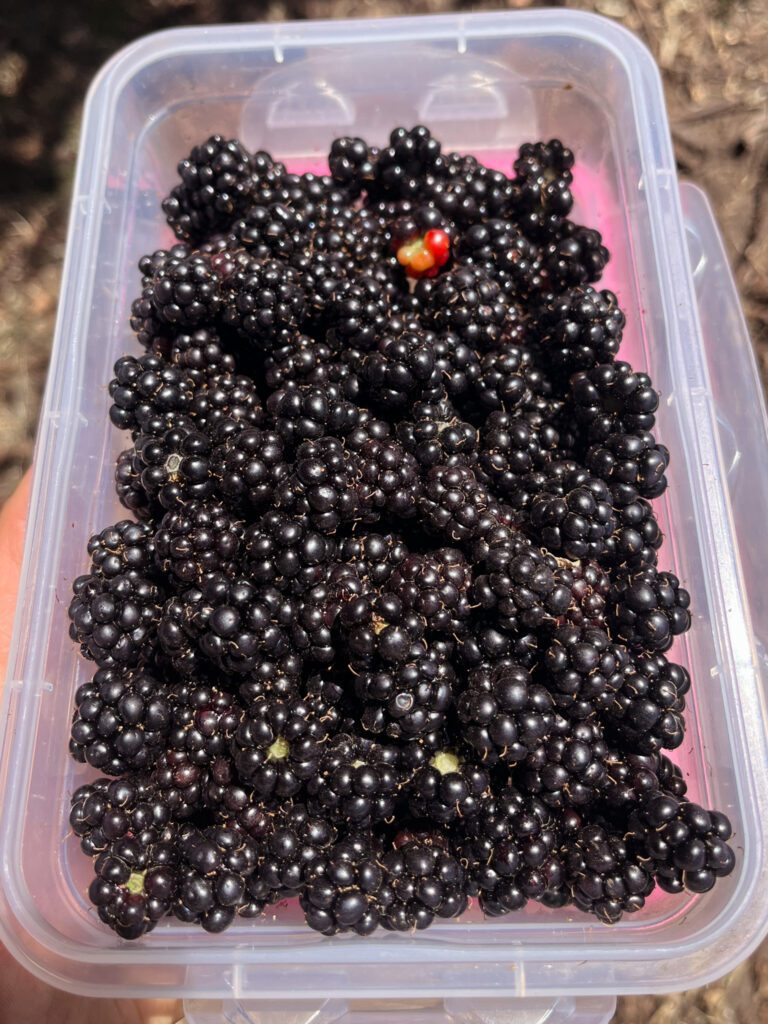

Best Backpacking Meal Ideas
Best Backpacking Breakfasts
For breakfast, decide if you want to heat up water to make hot food and drinks or if you want a quick grab-and-go option. For gourmet backpacking breakfasts like scrambled eggs or biscuits and gravy, look into pre-prepared meals in which you just add hot water to the bag.
DIY Backpacking Breakfasts
- Oatmeal. Add raisins, powdered milk, or shredded coconut for extra calories
- Granola
- Granola bars
- Dried fruits and nuts
- Coffee, tea, hot chocolate, powdered milk
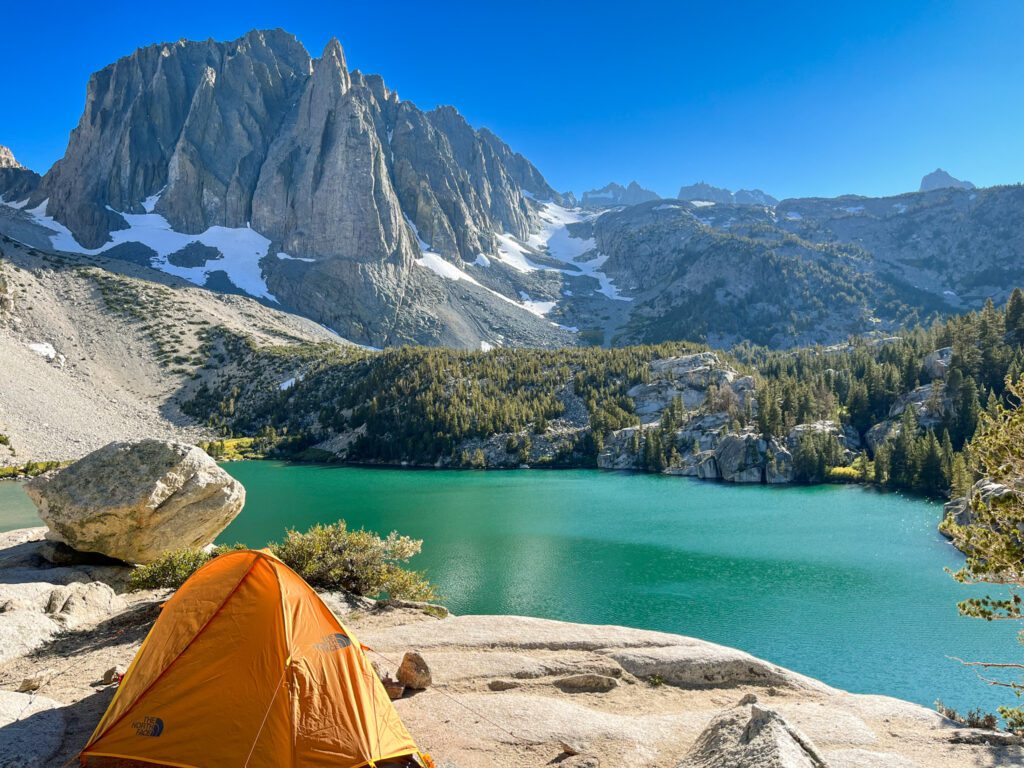

Best Backpacking Lunches
Most of the time, you’ll have lunch on the trail and won’t be digging any cooking equipment out of your pack. My food suggestions below reflect that.
Many times I’ll pack something perishable (such as a sandwich) for the first day’s lunch. It’s a little extra weight, but it only needs to be carried for half a day and is a great mood booster.
DIY Backpacking Lunches
- Tortillas or crackers
- Hard cheeses such as cheddar (individual portion packs are great)
- Vegetarian:
- Dried edamame
- Dried chickpeas
- Dehydrated hummus
- Sun dried tomatoes
- Meat:
- Tuna packets
- Salmon packets
- Jerky sticks
- Dry Salami
- Individual packets of mayo, mustard, and ketchup
- Individual packets of nut butter and jam
- Fresh carrots and mini cucumbers (for shorter trips)
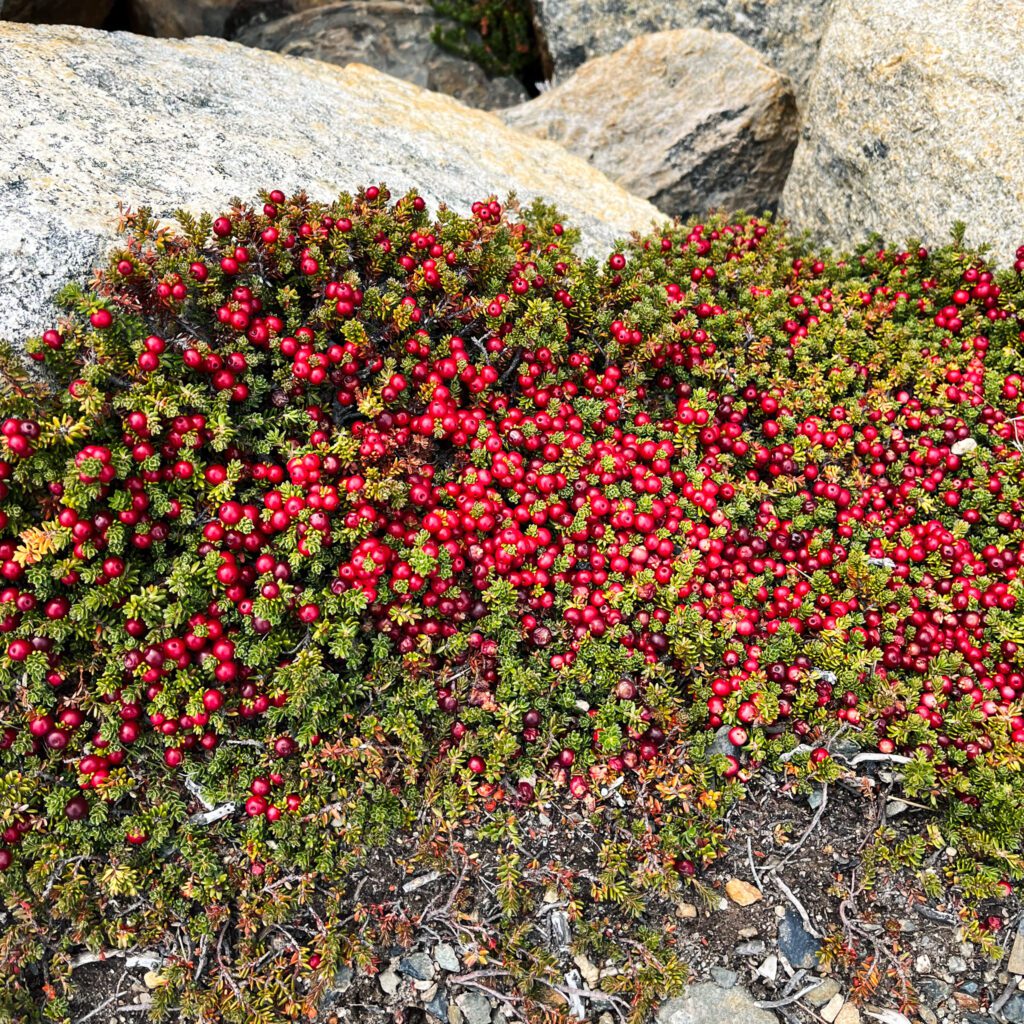

Best Backpacking Dinners
For backpacking dinners, I’ve listed many items that you can easily buy online or in the grocery store. Pick a base, then add veggies or meat, as well as seasonings. I usually cook everything in the same pot to save water and fuel and to minimize cleanup. I add quick-cooking items near the end.
This cooking method is cost-effective and allows you to personalize your meals, but it requires some time for ingredient gathering, measuring, and portioning. If you’re looking for a more convenient option, consider pre-prepared bags of dehydrated backpacking meals. There are hundreds of choices, including gluten-free, vegetarian, vegan, and organic meals. This option is also hassle-free, since all you have to do is add hot water to the bag (perfect if you have a Jetboil).
- Pre-prepared dinners
- Pre-prepared desserts. I am always craving something sweet after a long day of hiking, and you can find everything from pre-prepared berry crisp to cheesecake.
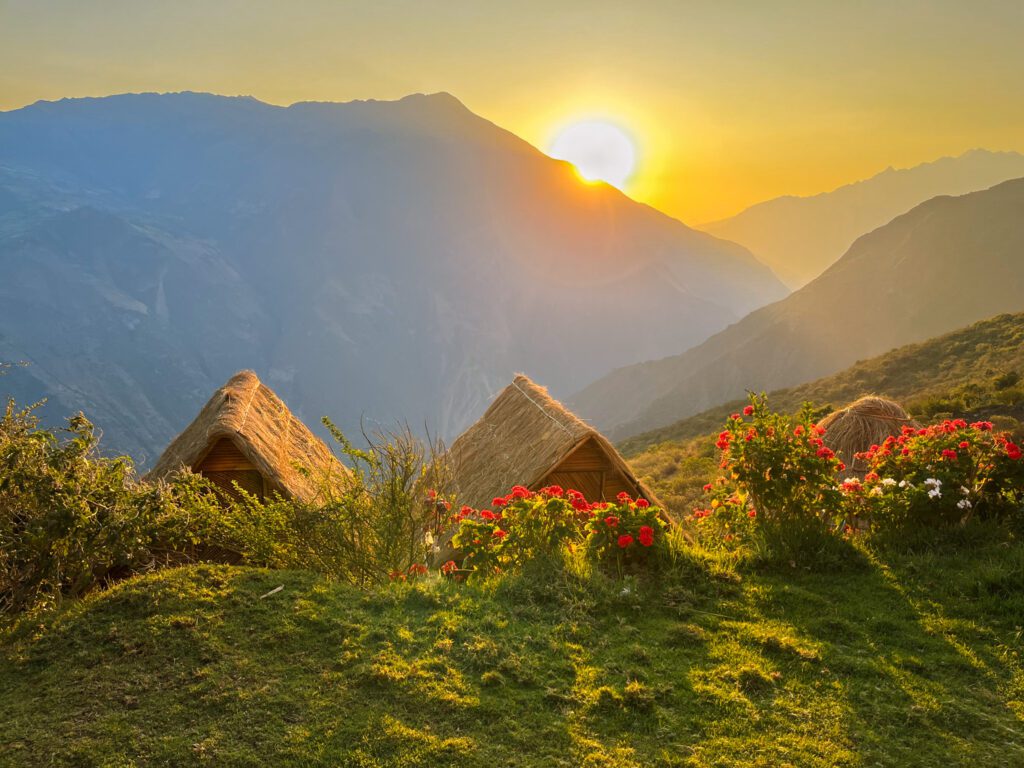

DIY Backpacking Dinners
- Base:
- Pasta
- Instant pasta
- Ramen
- Couscous
- Polenta
- Mac & cheese
- Instant mashed potatoes
- Instant rice
- Instant stuffing
- Lentil bowls
- Dehydrated soups (split pea, bean and miso soups)
- Vegetarian add-ins:
- Tomato powder
- Sun dried tomatoes
- Grated cheese (individual packets work well)
- Nutritional yeast
- Dried vegetable mix
- Dried beans
- Dried mushrooms
- Dried spinach flakes
- Plant protein
- Fresh veggies (for shorter trips)
- Meat add-ins:
- Seasonings:
- Salt. If you’re preparing everything from scratch, remember to bring a small bag of salt to season your meal!
- Olive oil. Bring in a small bottle
- Individual condiment packages (hot sauce, ketchup, mustard, mayo, soy sauce)
- Instant soup/broth flavor packages
- Dried pesto sauce
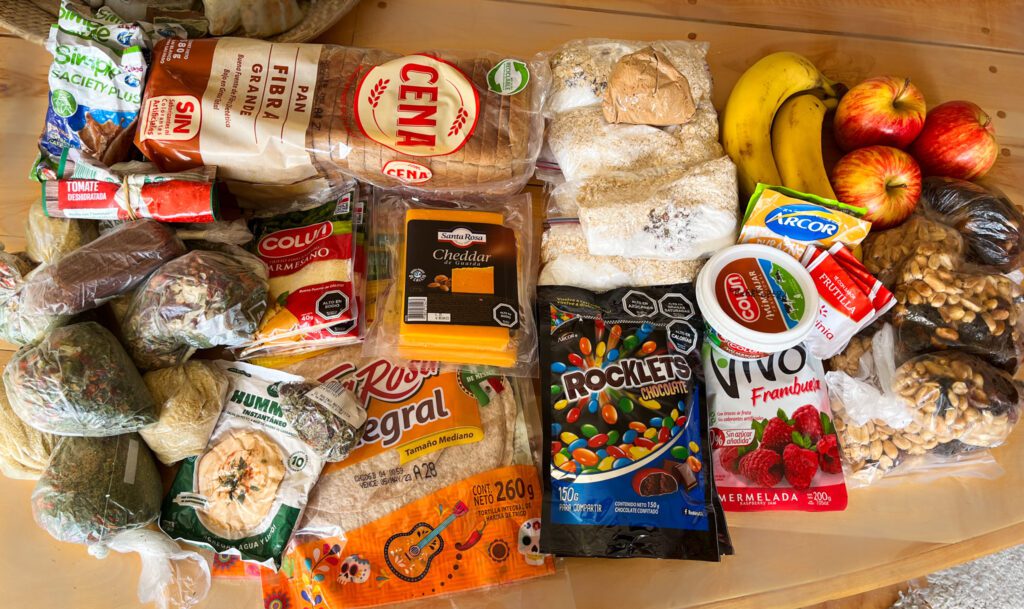

Best Backpacking Snacks
Pick snacks that you can easily eat on the trail. To keep your energy up when backpacking, it’s important to snack lightly and often versus consuming heavy and infrequent meals. The caloric value of the snacks I bring on backpacking trips is the same as my breakfast, lunch, and dinner combined!
DIY Backpacking Snacks
- Dried fruit. Trader Joe’s has a huge variety of small and affordable bags of dried fruit. My favorites are the dried mangoes and cherries.
- Fresh fruit (for shorter trips)
- Granola bars.
- Protein bars. These are my favorite! They’re delicious, nutritious, plant-based, and do well in heat.
- Candy. Sour Patch kids are the best motivator during grueling ascents
- Crackers. I usually bring Cheez-Its
- Protein shake powder
- Roasted seaweed sheets
- Nuts
- Treats such as chocolate. I sometimes put caramel sauce on tortillas.
Bonus tip: Some hiking areas are full of wild blueberries and blackberries in the peak of summer. Bring a hard container to collect them in and save them for snacks, breakfast, or dessert!
Other Backpacking Food Essentials
- Electrolytes. Adding these tablets to your water makes a huge difference in preventing cramps and headaches. This is especially true if you’re sweating a lot and at high elevation.
- Water bottles or water reservoir
- Water filter
- Water purification tablets (backup for water filter)
For additional backpacking food options, the next time you’re in the grocery store take a look at the bulk dried foods, soups, canned goods, and pasta sections. Ethnic markets are also a great place to look, especially for vegetarian products.
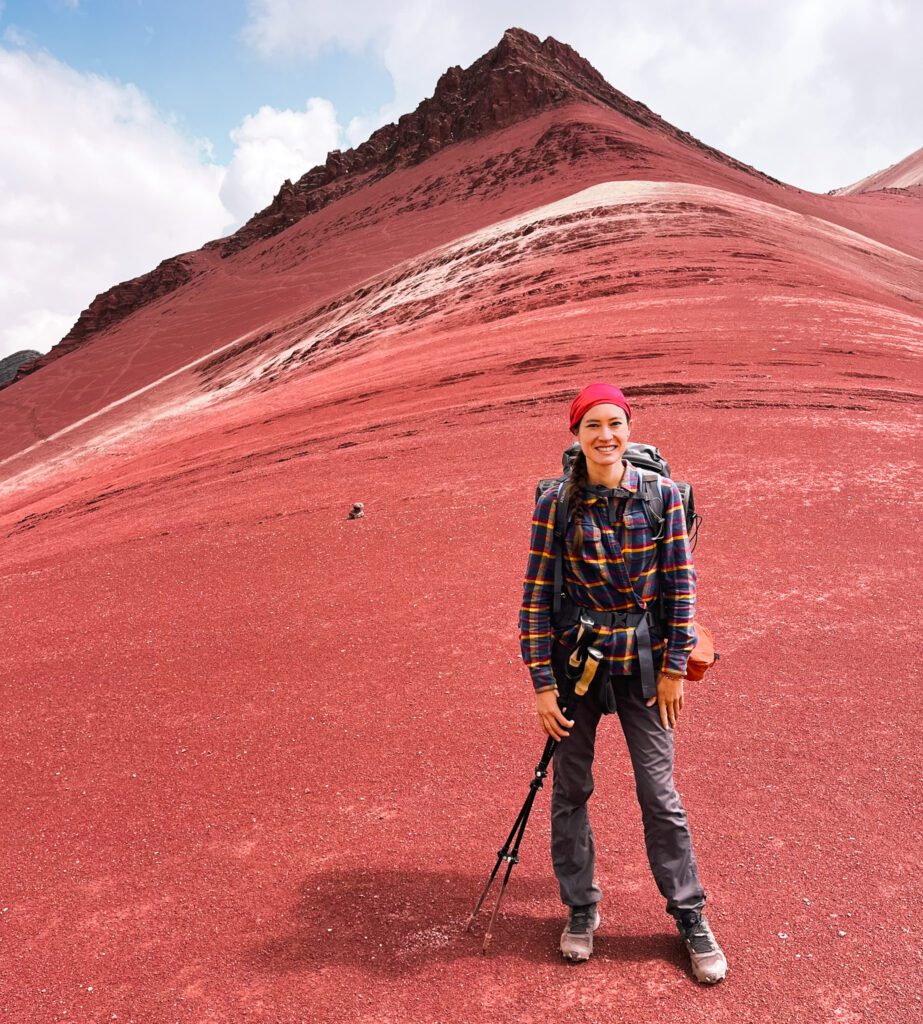

Thanks for reading, and I hope this guide to the best backpacking meals has sparked some inspiration for foods to bring on your next trip. What would you consider to be the best backpacking meal? Let me know your thoughts and questions in the comments.
Head to my Hiking and Camping Page for more tips, trail guides, and backpacking inspiration.
This site contains affiliate links; if you choose to make a purchase, I may earn a commission. Thanks for supporting me in creating free content for you to enjoy!
Save this post for later and share on Pinterest!
HIKING TRIP RESOURCES
Head to my Travel Resources Page for more recommendations.
Hiking Checklist and Backpacking Checklist. Make sure you have everything you need before heading out.
Viator and Get Your Guide. If you don’t want to hike or camp alone, there are various organized tours you can join, ranging from day trips to multi-day excursions.
Booking.com. This is my go-to platform for booking accommodation since it consistently gives me competitive prices and additional discounts based on usage.
LifeStraw. This easy-to-use water filter guarantees that you always have access to clean drinking water.
Travel Credit Card. Earn substantial points for travel-related expenses and a very generous bonus when opening an account.
Comments




Hi, I’m Kristina! I’m a solo female traveler sharing my personal experiences around the world. Authentic travel is important to me; in my destination guides I emphasize not just the most spectacular sights but also the local stories and history.
Other things I’m passionate about are discovering hidden gems, budget-friendly travel, and hiking and backpacking. My goal is to show you how to seek adventurous experiences for yourself!

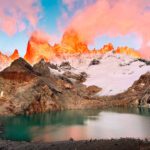

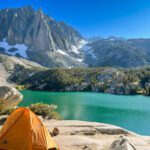
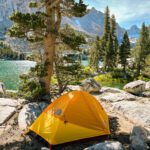
Leave a Comment